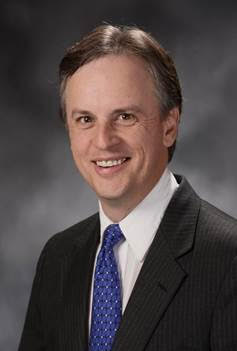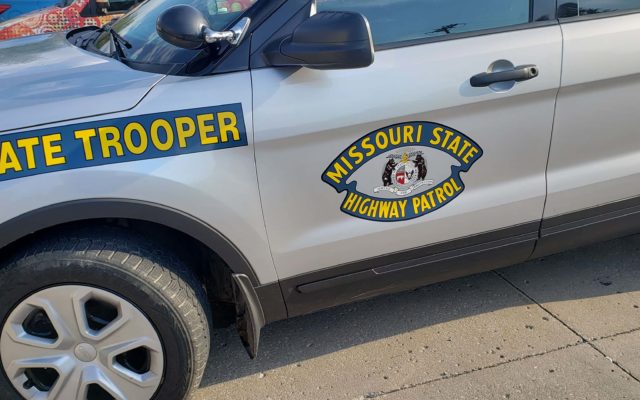THE EGGLESTON REPORT – WHAT IS A PAC?

If you have a TV, radio, or mailbox, you might have noticed that it is election season. Ads and mailers are showing up promoting one candidate or bashing another. On the ad is always a “paid for by” statement. If the ad is positive, it will probably have the candidate’s name attached to it, like “paid for by Missourians for John Smith”. But if the ad is negative, its payer will probably be political action committee (PAC) with a vague name, like “Missourians for a Happier Tomorrow”. Nine times out of ten, the negative ad is still from John Smith, but just from the dark side of his campaign so John Smith doesn’t have to appear to get his hands dirty.
PACs have been around for a while, but the modern partnership of an angelic candidate committee paired with a devilish PAC really took off after the campaign contribution limit amendment passed by voters in 2016. Prior to that, any person or business could donate thousands or even millions to a candidate, but it was all transparent and easily searchable on the Missouri Ethics Commission’s (MEC) web site. But 2016’s Amendment 2 passed limiting contributions to the $2000-$2500 range, and only from individuals, not businesses. This was advertised as getting big money out of politics to clean up corruption, but Amendment 2 also allowed people to form a group to pool their money to advertise for or against a candidate or ballot measure – a PAC.
Eventually, campaign consultants figured out they could use the PAC language as a loophole around the campaign finance limits since PACs can still get unlimited money from almost any source. Plus, it is now difficult for citizens to know who is funding whom. While both candidate and PAC finance reports are searchable on the MEC web site, I know of no publicized list of which PAC is the dark side of which candidate. The insiders know. The donors know. The public doesn’t know without a lot of digging, dot-connecting, and deduction.
Lastly, PACs can run positive ads, and occasionally do, but are notorious for the negative ads. Also, it is technically illegal for a candidate to tell a PAC how to spend their money, but knowing the reputation of the consultants running the PAC the candidate often knows what to expect. And frequently the consultant company running the PAC is the same company running the candidate’s campaign, which is technically legal if the staffers on one side don’t work with the staffers on the other, but it’s nearly impossible to prove or disprove collusion. Clearly, there is plenty of room for improvement in today’s campaign finance laws.
To research a state candidate committee or PAC and see where they got their money and how they spent it, visit mec.mo.gov and in the lower left panel click on Candidate or Committee Name. For federal, go to fec.gov.
As always, if you have questions email me at [email protected]. Until next time, health, happiness and prosperity to you and your family.
PICTURES FROM THE DISTRICT

Keira helping out her grandpa
FROM THE CAPITOL NEWS DESK
State Unemployment Rate Drops to Historic Low
Missouri once again received good news as the latest jobs report shows Missouri’s unemployment rate has hit a record low. The state unemployment rate fell to 2.8 percent in June, which is the lowest rate in Missouri since the data series began in 1976.
Missouri was previously at 3.1 percent unemployment for the month of May but saw non-farm payroll employment increase by 5,300 jobs from May to June. That increase dropped the unemployment rate by three-tenths of a percent. Compared to last year at the same time, Missouri has seen an increase of 65,500 jobs. The June 2021 unemployment rate was 4.4, which is 1.6 percentage points higher than the current rate. Missouri’s unemployment rate has been at or below the national rate for the last five years.
988 Suicide & Crisis Lifeline Now Available in Missouri
Missourians suffering a mental health, suicide, or substance use crisis can now dial 9-8-8 to receive compassionate, accessible care and support. The 988 number routes callers to the existing National Suicide Prevention Lifeline, which provides free and confidential emotional support 24 hours a day, seven days a week.
During the 2022 legislative session, the Missouri House and Senate approved approximately $30.5 million in funding to implement the new 988 Crisis Hotline. The governor signed that funding into law, and the new system officially began operation on July 16.
“The launch of the 988 crisis line will establish a more streamlined and effective resource for Missourians in behavioral health crisis,” Gov. Parson said. He added, “We know that when individuals are experiencing crisis the sooner we can connect them to support and provide assistance the better. The launch of 988 is an important step in addressing the mental health crisis and saving lives.”
The 988 line will be the first step to engage individuals experiencing a behavioral health crisis. There are seven crisis centers in Missouri responsible for answering 988 contacts for the state. The trained crisis specialists at each center will listen, work to understand how the individual’s problems are affecting them, provide support, and connect them to resources. Crisis specialists will also have the ability to dispatch mobile crisis response teams for additional crisis response wherever the crisis is occurring in the community and based on the needs of the person.
The director of the Missouri Department of Mental Health said the department is “seizing this opportunity to advance current crisis services towards an evidence-based care continuum prepared to deliver high-quality behavioral health services statewide. Providing consistent crisis care and support will be integral to reducing the burden on and misuse of law enforcement/emergency response and other public health services.”
While 988 is a national initiative, it is up to each state to ensure crisis services are available to anyone, anywhere, and anytime. After nearly two years of planning and preparation, Missouri’s 988 centers are prepared and ready to answer the projected 253,000 contacts (calls, texts, and chats) expected in the first year of the 988 implementation.
For more information on 988 in Missouri, please visit https://dmh.mo.gov/behavioral-health/988-suicide-and-crisis-lifeline.
Missourians dealing with a crisis who need immediate help can reach out by calling or texting 988, or chatting at https://988lifeline.org/.
Missouri State Archives YouTube Channel Launches
Missourians interested in learning about the state’s history can now access a new YouTube channel curated by the Missouri State Archives. Missouri Secretary of State Jay Ashcroft announced the channel that offers the public unprecedented access to historic films created by Missouri state government, along with recordings of the State Archives’ Thursday Evening Speaker Series and other Missouri history-related content.
In celebration of the launch, the channel now features four new-to-the-archives films produced in 1931 by the Missouri Bureau of Public Information for the state’s Game and Fish Department, the precursor of today’s Missouri Department of Conservation and Missouri State Parks. The recordings – “Arrow Rock,” “Big Spring,” “From Whence the Rainbows Come!” (about Bennett Spring State Park) and “Meramec State Park” – were originally created to promote the virtues of Missouri’s outdoors. The films were produced in black and white on silent 16mm film and are between six and eleven minutes in length.
“Preserving and showcasing these recordings will help inform our future generations of the great natural resources Missouri has always had to offer,” Ashcroft said. “Missouri is a beautiful state with amazing features.”
For more information about the YouTube channel or the Missouri Game and Fish Department films, contact the Missouri State Archives reference staff at [email protected] or (573) 751-3280. The YouTube channel can be accessed at the following link: https://www.youtube.com/c/missouristatearchives



